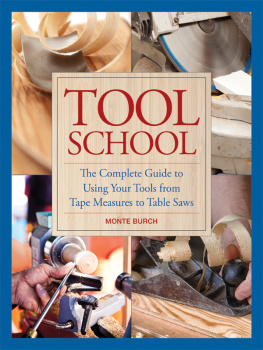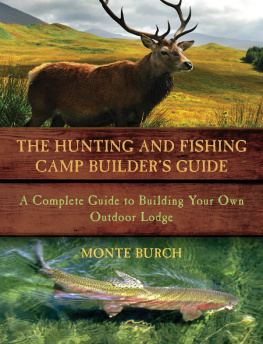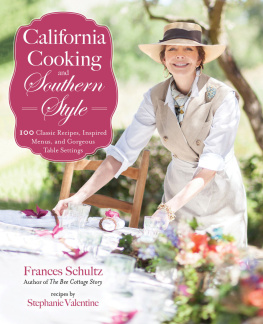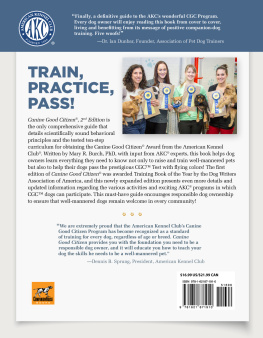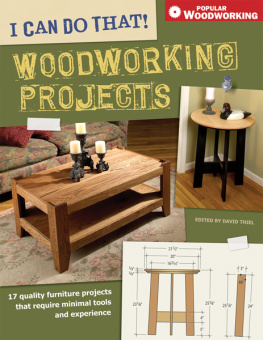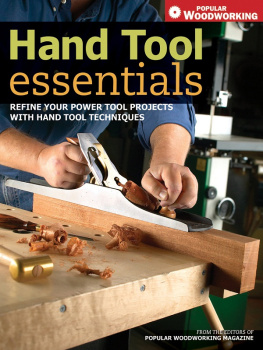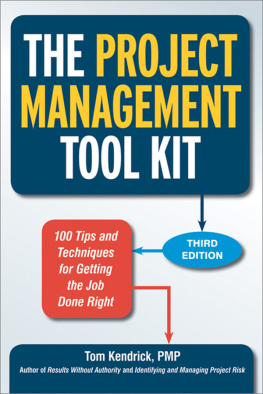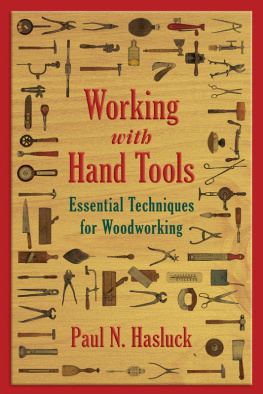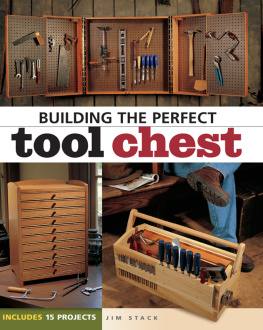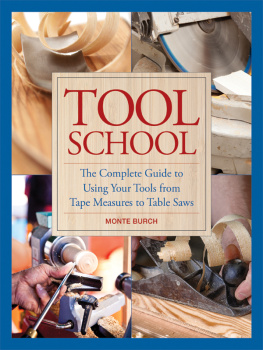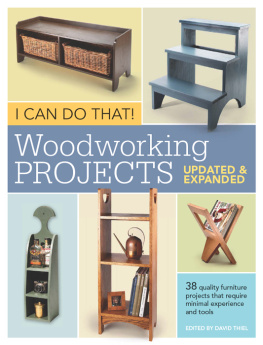Safety
Safety is always a very important consideration when using tools, whether hand, portable electric, or stationary shop tools. And dont think even simple hand tools cant cause problems. As you read through this book, youll discover a lifelong collection of woodworking incidents to avoid. The first step is to thoroughly read and make sure you understand the owners manuals of any tools you intend to use before you begin. Follow all the manufacturers' safety instructions. Do not use tools without the appropriate guards, where possible. Do not change, adjust, or work on any power tools without unplugging them or removing batteries and assuring they do not have power. Keep your hands a safe distance from blades and cutters as suggested by owners manuals. Always wear eye, ear, and, in instances where needed, dust protection devices. In addition to being a woodworking writer, Im a professional musician, and believe me, safety is a very important part of my woodworking techniques. I can also speak of experience with ear protection. A lifetime of playing in rock and country bands and running power equipment, early on without proper protection, has almost completely taken away my hearing.
Do not attempt techniques or operations unless you understand them completely, even those explained in this book. And do not take shortcuts. Make sure you keep tools sharp and in proper operating condition. Please be safe, but enjoy woodworking, its a very enjoyable hobby and avocation.
Metric Conversion Chart
| to convert | to | multiply by |
| Inches | Centimeters | 2.54 |
| Centimeters | Inches | 0.4 |
| Feet | Centimeters | 30.5 |
| Centimeters | Feet | 0.03 |
| Yards | Meters | 0.9 |
| Meters | Yards | 1.1 |
Copyright 2008, 2014 by Monte Burch
All rights reserved. No part of this book may be reproduced in any manner without the express written consent of the publisher, except in the case of brief excerpts in critical reviews or articles. All inquiries should be addressed to Skyhorse Publishing, 307 West 36th Street, 11th Floor, New York, NY 10018.
Skyhorse Publishing books may be purchased in bulk at special discounts for sales promotion, corporate gifts, fund-raising, or educational purposes. Special editions can also be created to specifications. For details, contact the Special Sales Department, Skyhorse Publishing, 307 West 36th Street, 11th Floor, New York, NY 10018 or .
Skyhorse and Skyhorse Publishing are registered trademarks of Skyhorse Publishing, Inc., a Delaware corporation.
Visit our website at www.skyhorsepublishing.com.
10 9 8 7 6 5 4 3 2 1
Library of Congress Cataloging-in-Publication Data is available on file.
ISBN: 978-1-62873-702-8
eISBN: 978-1-62914-037-7
Printed in China
About the Author

Monte Burch was an editor for Workbench magazine through the late 1960s and early 1970s. He has been a freelance how-to woodworking writer/photographer and is the author of over 70 how-to outdoor and other nonfiction books, including a number that were Popular Science monthly main selections, such as The Home Cabinetmaker and Complete Guide to Building Log Homes . Over a million copies of his books have been sold. Monte lives on a 350-acre farm with over half the land in managed timberlands. His home has a full woodworking shop and photo studio.

INTRODUCTION
IF YOURE NEW TO TOOLS and are curious about what tools to purchase, as well as the basics of how to use them, this book will enlighten you in your purchases and learning. Its best to start small, with only a few hand tools, and learn to use them properly. Then graduate to a portable electric tool or two, and finally begin adding stationary power tools.
Longtime woodworkers will find new methods, procedures, and tool uses in this book. The knowledge, drawings, and photos are not meant to take the place of tool manufacturers' instruction books on their specific tools. Make sure you read and understand all procedures and safety instructions for each tool. Some of the tools shown are handed down or purchased old-timerssome are, at the time of printing, the latest and greatest. Regardless, the basics of what constitutes a good-quality tool remain the same, and their uses are also fairly standard.
I hope this Tool School book introduces you and encourages you to a lifetime of woodworking enjoyment.


HAND TOOLS
WOODWORKERS AND CARPENTERS have been in my family for generations. We have inherited a beautiful walnut bureau constructed by an ancestor for his wife around the turn of the century. When you examine it, including the turned side pedestals, its hard to imagine the massive furniture piece was constructed entirely with hand tools with the exception of the turnings, which were created on a foot-operated lathe.
If you spend any time in museums, youll appreciate the work with hand tools alone on projects, such as a Philadelphia Highboy, as well as any number of Chippendale pieces. I learned woodworking at my fathers side, and his first lessons were, of course, with hand tools. His thoughts were the basics should be with hand tools, and then you graduate to powered tools.
When I later began to teach woodworking, I followed his advice with my students. There is also something connecting in creating a project using only hand tools, especially when using an old tool handed down from fathers or grandfathers or purchased at a flea market. On the other hand, some hand tools are still the primary tool of use.
HAMMERS AND NAILS
A hammer, in the form of a rock, was probably mankinds first tool. Today hammers are just as important and are available in a wide range of types and sizes that are suited to specific chores. Hammers are also some of the most misused and abused tools. Although we often treat hammers as such, there is no such thing as a universal hammer. Hammers include nail or claw hammers, ball-peen hammers, sledges, blacksmith's hammers, magnetic hammers, and soft-face mallets. Choosing the proper hammer for each chore is important not only for safety, but also for the life of the hammer, the ease of use, and success in the chore. The most common hammers for woodworkers are nail or claw hammers.

Types of Hammers
Claw hammers should be used only with nonhardened common or finishing nails. These hammers are available in two styles: curved-claw with 16- or 20-ounce weights, used for general carpentry, and lighter 10- or 12-ounce weights, used for finish carpentry or cabinetry. Straight-claw hammers are sometimes called ripping hammers. The straight claw provides more leverage for pulling larger nails when doing framing or remodeling work. Straight-claw hammers commonly come in 20-, 24-, 28-, or 32-ounce sizes. The most common hammer is a curved-claw 16-ounce model. This hammer can be used for just about any carpentry, millwork, furniture construction, or home repair and maintenance. This size hammer can also drive everything from small brads to heavy nails, and the curved claw provides easy nail pulling of small- to medium-size nails.

